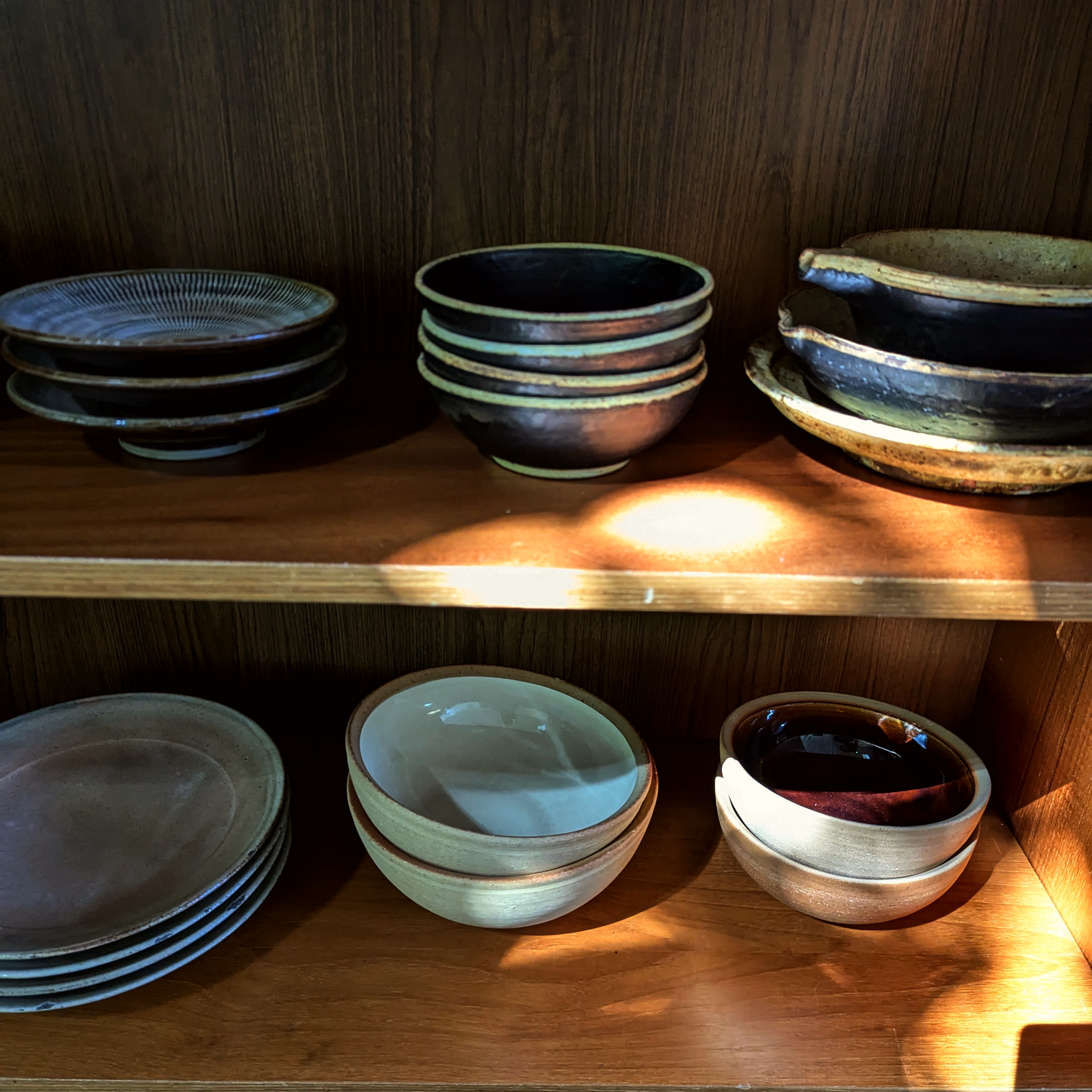
Nurturing Your Ceramics
Embrace the beauty of aging.
The more you use them, the more character and depth they gain, much like growing older.
Appreciate the changes, love the imperfections, and cherish the idea that your ceramics grow with you over the years.

Understanding Porcelain and Earthenware
Porcelain: Known for its delicate look, porcelain is actually strong and non-porous, making it less prone to staining. Its thinness, however, makes it more susceptible to chipping and thermal shock.
Earthenware: More porous and rustic in feel, earthenware can absorb liquids and develop stains, so it requires special care. Its porosity also makes it vulnerable to cracking from sudden temperature changes. These ceramics are especially rewarding to nurture, as they age gracefully and gain character with use.
Semi-Porcelain: Blending the strength of porcelain with the warmth of earthenware, semi-porcelain is less porous and more resistant to staining. It can still chip or crack from thermal shock, but it’s a perfect starting point for those new to non-porcelain ceramics. Sometimes described as a refined form of stoneware, it combines durability with a softer, organic feel.

Why Care is Important
Proper care is essential for preserving the beauty and longevity of your ceramic pieces, especially earthenware. Without the right care, earthenware can absorb stains, odors, and moisture, which may weaken the material over time. By following specific care practices, you can maintain the integrity of your ceramics, allowing them to age gracefully and develop a unique character that tells the story of their use in your life.
When you first bring new earthenware... (Medome)
-

Rinse with Warm Water
Before using, gently rinse your new ceramics with warm water to remove any dust or residues from the production process.
-

Soak in Rice Water or Starch Water
This traditional method helps seal the tiny pores in the ceramic, preventing stains and odors. Prepare rice water or water mixed with about 2 tablespoons of flour or potato starch in a pot. Place the ceramics in the pot before bringing the water to a boil—it's important to start with the ceramics in the water and not add them to already boiling water.
-

Let them cool down
After simmering for 15 to 20 minutes, turn off the heat and let the ceramics cool in the pot for several hours or overnight.
-

Rinse them off
After soaking, rinse them off
-

Dry completely
Allow the ceramics to dry completely before use. This ensures that they absorb the treatment properly.

Everyday Care Tips:
Hand Wash Only for Earthenware (recommended): Always wash your ceramics by hand using mild detergent and a soft sponge. Avoid using abrasive pads or harsh chemicals.
Store Carefully: Stack plates and bowls with care, and make sure to dry them completely before putting them away to prevent molding.
Repair with Kintsugi (If Necessary): If your ceramic piece breaks, consider repairing it with the Japanese art of Kintsugi, which highlights the beauty of its history.
Needing a kintsugi repair? Contact our friend, Half Ripe Studio.
Embrace the Aging Process
Patina, stains, chips, cracks, and discoloration are all part of the beauty of your ceramics. Over time, these unique patterns and imperfections reflect their journey with you, adding character and telling the story of a well-loved piece. Celebrate these imperfections as they enhance the charm and history of your ceramicware.





